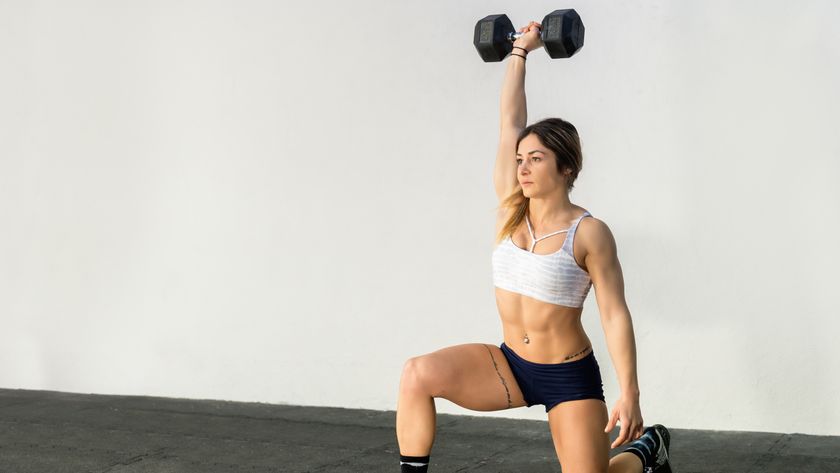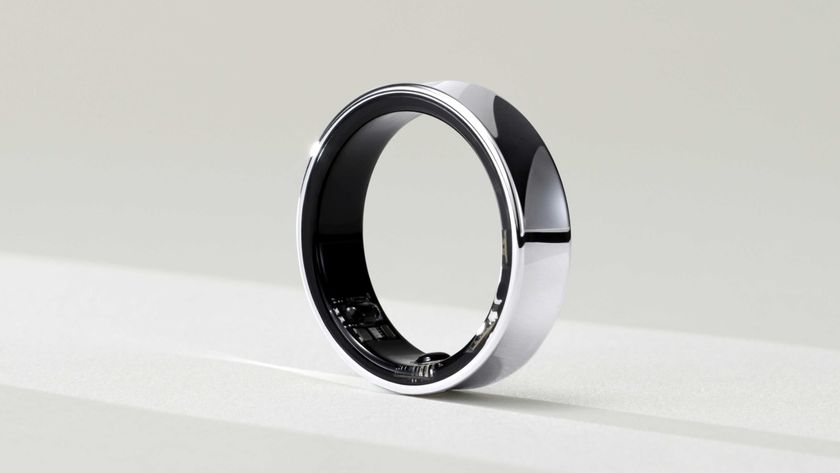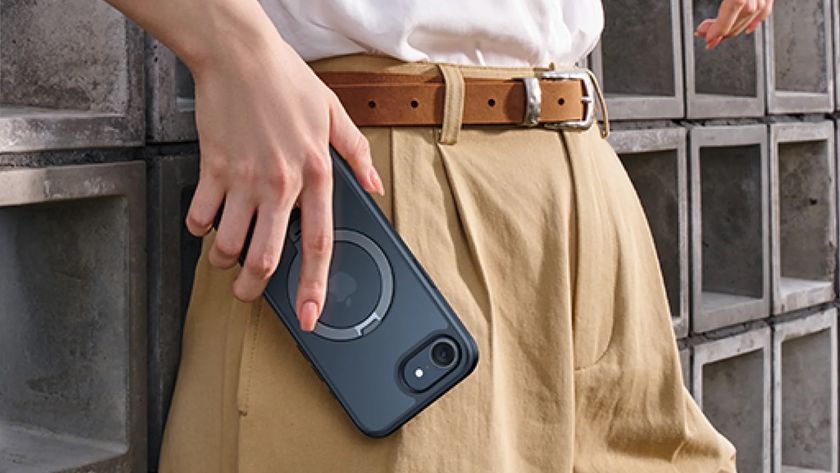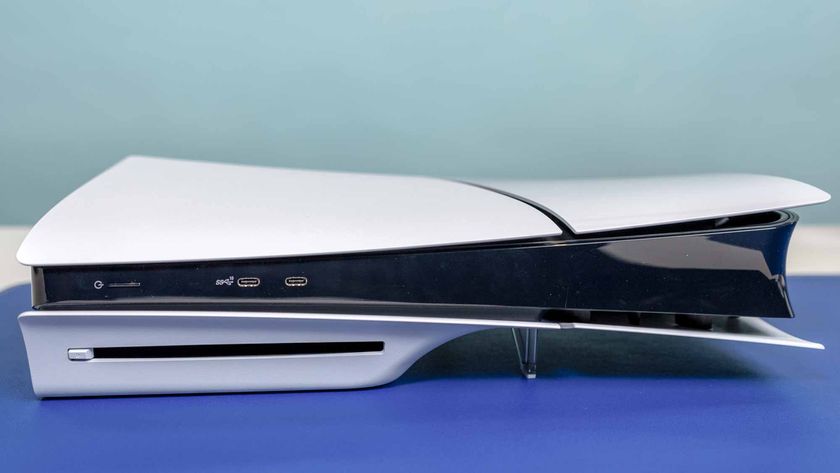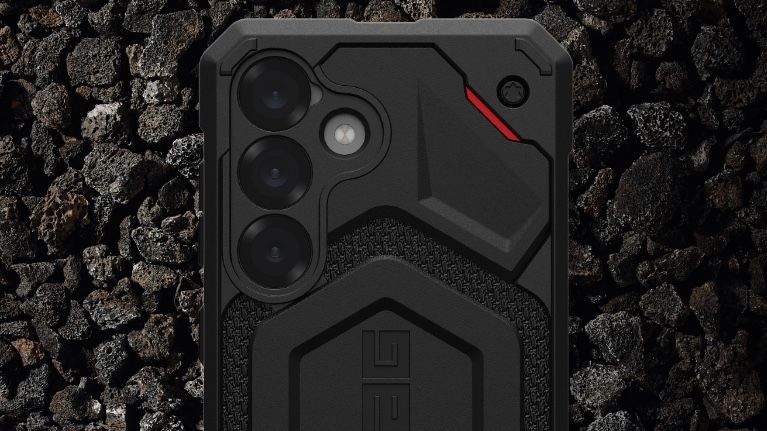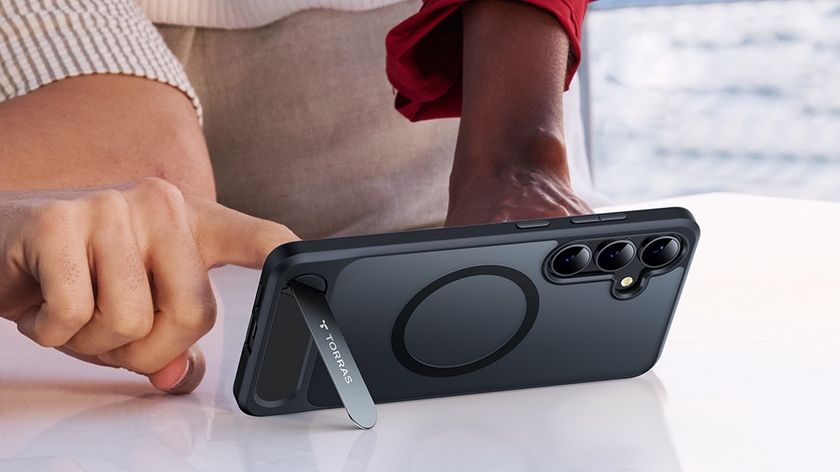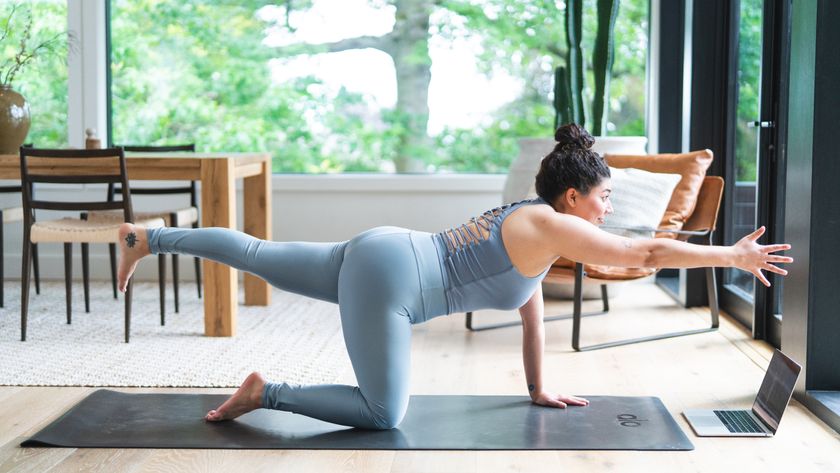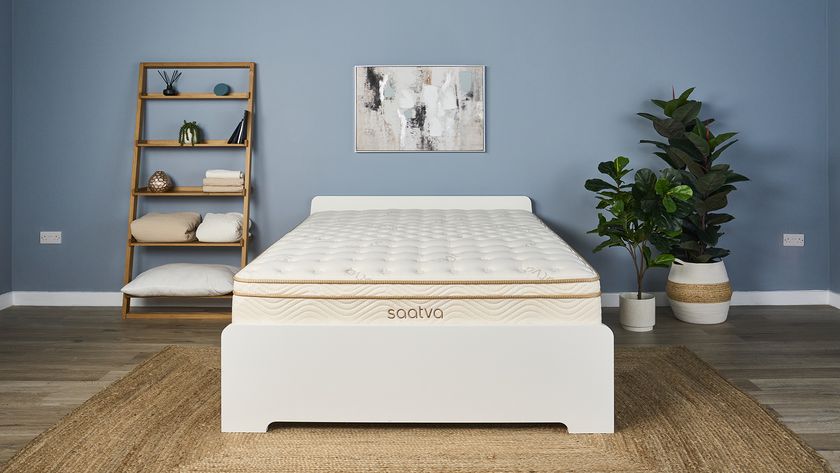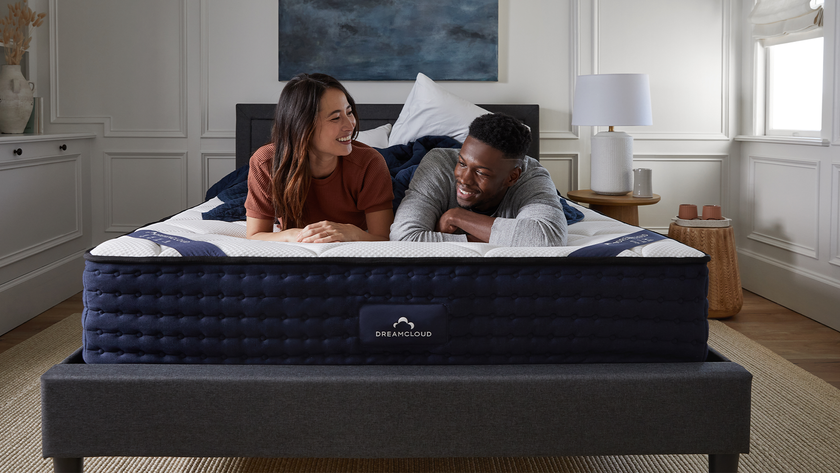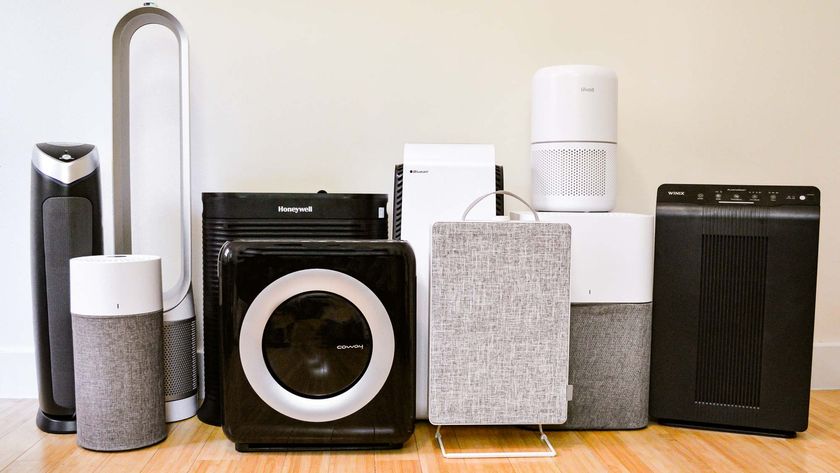9 best resistance bands 2025: tried, tested and reviewed
These are the best resistance bands out there, according to our team
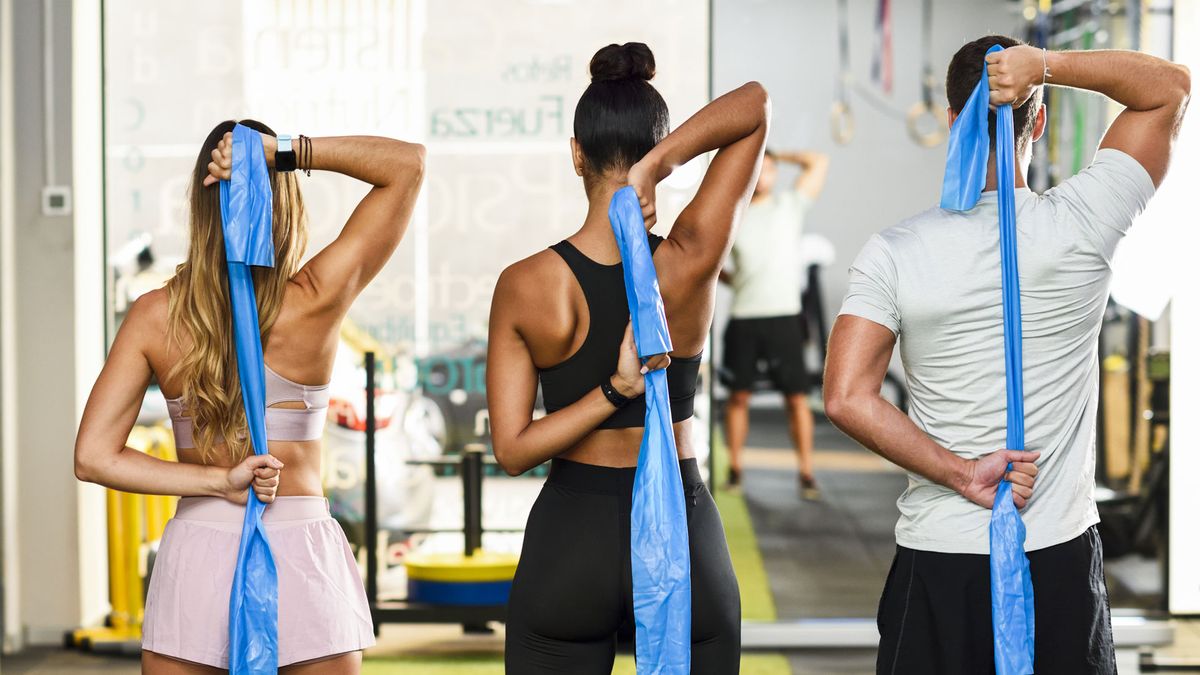
The best resistance bands support ab workouts, strength and conditioning, recovery routines, or physical therapy. They also come in a variety of packs with different levels of thickness and attachments to help you diversify your workouts. So, which to pick?
Because you can't endlessly load with them as you can with dumbbells, barbells, or kettlebells, you could be asking whether resistance bands work, especially when building strength or muscle. But they do, you just need to grab a set worth the money.
We tested and reviewed the best resistance bands at home and in the gym, adding nine options to our final line-up. These are bands we use ourselves or highly recommend to others, and each has been put through the sweat test against, strength, usability, budget and features like grip, value and what comes in your pack.
Our favorite set is the Bodylastics resistance band range for pure variety, but we also enjoy the Fit Simplify range of loop bands are the top pick for best value. Read on for our other winners.

Sam is Tom's Guide's resident senior fitness writer and trainer, who teaches alongside writing and specializes in mobility work. She uses resistance bands in her training, including strength work, mobility sessions and recovery, so she knows a thing or two about how to use them and which ones are the best for your training.
The best resistance bands at a glance
- Best overall resistance bands: Bodylastics resistance bands at Bodylastics.com
- Best premium resistance bands: SPRI Braided Xertube resistance bands at Amazon.com
- Best budget resistance bands: Fit Simplify resistance loop bands at Fitsimplify.com
Best resistance bands overall
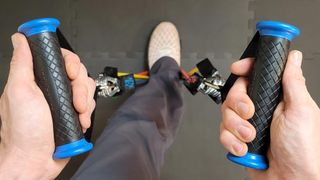
+ Comes with a variety of attachments and resistance
+ Internal cord to prevent breakage
- Exercises in the booklet supplied are limited
This kit has it all: Besides the exercise bands themselves, it comes with various useful attachments, including handles, ankle straps and a door anchor. The durable, anti-snap latex bands range in resistance from 10 lbs to 30 lbs, maximum of 200 lbs depending on which kit you buy.
Everything comes in a tidy carrying pouch; the whole package weighs less than 5 pounds in total. In my opinion, the best thing about these bands is the patented anti-snap technology, designed to prevent overstretching and snapping during those more intense workouts. In my testing, each band felt strong as hell, and I never felt unsafe while stacking up the resistance levels. The ankle straps are comfortably padded, too.
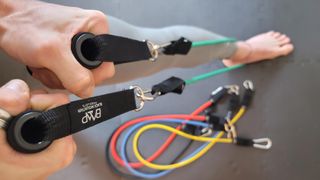
+ Can stack different resistance bands for more tension
+ Comes with extras
- Clips catch on bands
Utilizing a proprietary blend of synthetic and natural rubber, Black Mountain Products features commercial-grade grommets on their resistance bands, combined with durable nylon and double stitching on all seams. The metal clipping system makes these stackable bands easy to swap out the handles, which are grippy and built for comfort.
I was pleased to find that the whole kit comes with its own carrying pouch to house the included bands (five total, ranging between 2 and 30 lbs of resistance each), two handles, an ankle strap, a door anchor, and a handy starter guide, which outlines how to stack multiple bands on the handles for increased overall resistance. (For example, combining the red and black bands at once equates to roughly 40 to 50 lb s of total resistance.) All in all, that’s plenty of bang for your buck.
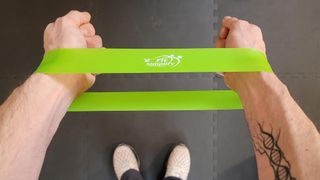
+ Lightweight and extremely portable
+ Simple, easy-to-understand resistance rating
- Not long-lasting
While most resistance bands are generally affordable, Fit Simplify’s best-selling set is almost shockingly inexpensive. The five loops range from “extra-light” to “extra-heavy” resistance and are made from heavy-duty, tear-free latex.
Fit Simplify Resistance Loop Exercise Bands are simply great for anyone looking to add a little more resistance to their HIIT routine. We appreciated the simplicity: each package consists of just five resistance bands in a nylon pouch; a short “use and maintenance” pamphlet is also included.
Be warned: these bands are built to (eventually) fail. According to the pamphlet, each band is rated for 9,000 individual stretches with normal use.
Best alternative resistance bands
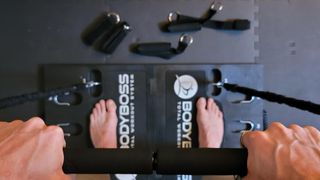
+ Whole workout package
+ Comes with a workout manual
- Range of resistance won't be for everyone
As the name implies, the BodyBoss 2.0 isn’t technically a resistance band: it’s a whole workout package. Of all the resistance band kits I’ve tested, this one is the most comprehensive. The whole package includes a foldable base (with retractable anchors for the resistance bands, which simulate 0 to 30 lbs each); two to four resistance bands (depending on which kit you purchase); two handles; two wrist/ankle straps (for cardio boxing); a door anchor; and a workout bar.
But that’s not all. BodyBoss bundles its kit with a training journal, setup guide, and surprisingly robust workout manual (complete with color photo diagrams for each exercise).

+ Non-latex design and slip-proof
+ 4-inch bands comfortable against the skin
- No accessories
Many of the best resistance bands are made of natural rubber latex, but TheraBand’s trio of synthetic rubber bands help those with allergies avoid hives or anaphylactic shock.
Unlike the other non-loop bands, however, there are no handles (or carabiner clips) on either end to grab onto; you can either wrap the resistance bands around your body as you grip them or tie them off into customizable sizes.
The beginner set we tested comes with three different bands (respectively rated at 4.3, 3.7, and 6.7 lbs of resistance each), but the advanced set ups the ante to 8.5, 10.2, and 15.3 lbs of resistance. Heck, it’d cost less than $50 to spring for both sets, which makes these resistance bands a damn good value, too. And while they look modest, TheraBands are the perfect addition to any home gym; they’re more versatile than you’d expect.
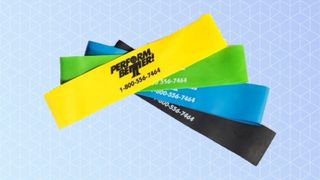
+ Easy-to-understand loops
- Won't be large enough for all users
- Not suitable for anyone with a latex allergy
The Perform Better Mini Band set comes with four loops ranging from “light” to “extra heavy.” (The tension range isn’t listed, but is likely in the 3 to 30 lb range.) They measure just 9 inches in diameter, which ensures immediate tension, though larger-limbed people may find using them to be a bit intense.
Like the Fit Simplify bands above, the Perform Better Mini Band Resistance Loop Exercise Bands don’t have any standout features in the design department. You’ll get four light to extra-heavy resistance 9 x 2-inch bands, a single-page exercise pamphlet, and that’s it.
The bands’ tighter diameter does indeed put you to work right away. If you need more range for lankier arms and legs, the Fit Simplify bands might be a better choice.
Best premium resistance bands
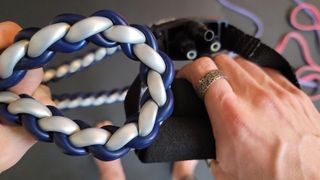
+ Lightweight
+ Durable and strong
- No extras
Unlike every other resistance band on this list, which are essentially designed like oversized rubber bands, each SPRI Braided Xertube is composed of four separate bands braided together like a rope. They’re lightweight, super durable, and easy to toss into a gym bag as you head out the door. The Tuff-Tube rubber is designed to take plenty of abuse, resisting abrasion and tears as you plow through your next arm day; according to the company, these are the toughest tubes on the market.
For nearly $30 per band, they darn well should be. While SPRI does offer a variety of resistance band kits, the Xertube design gets the premium treatment (i.e., they’re sold separately, one band at a time). That being said, SPRI does offer a plethora of other useful gym gear to complement its bands, and after test-driving the Xertubes, I’d be willing to bet their other equipment is worth the extra spend.
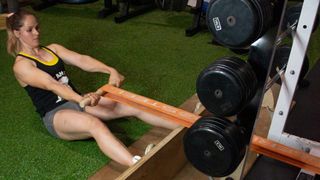
+ Seriously strong and comes in bundles
- No accessories or instructions
- Not suitable for latex allergies
Serious Steel’s Heavy Duty Resistance Bands come in six different varieties, and they’re made with fused latex sheets for dead-serious tensile strength. The strongest band can withstand 150 lbs of tension, adding some extra “oomph” to those pull-ups, squats, deadlifts and leg presses. (The lower-level bands are fantastic for warm-ups and stretches, too.)
One look at the Serious Steel Heavy Duty Resistance Band Set, and I knew this company was playing for keeps. I tested out their two-band set that includes one 5 to 25-lb band and one 10 to 50-lb band. Serious Steel offers six different bands in total and bundles them in packs of two, three, four, and six. You don’t get any extra accessories or instructions with these resistance bands, but that’s because they’re marketed to people who already know what to do with them. I appreciate all the customization here because everyone has different fitness goals and needs.

+ Inbuilt Bluetooth sensors connect to an app for interactive workouts
+ Easy to see progress
- App subscription starts at $15 per month
Wearables have become a hot commodity in recent years, and Hyfit Gear 1 purports to be the first-ever smart strength-training resistance band. It comes with built-in Bluetooth sensors that connect to an app (available on both iOS and Android) to track repetitions, duration, force and calories burned.
The adjustable bands are built to last, while the included accessories allow for myriad workout variations. Anchor the bands to utilize your full bodyweight, or loop them around your ankles to add extra tension to your squats.
The Hyfit Gear 1 is fairly new to the market, but it’s gaining traction in the fitness sector, and we’re always interested in proper synergy between fitness and tech. (Judging from the company website, the Hyfit Gear 1 looks like the Peloton of resistance bands, complete with a monthly subscription.) We’ll keep our eyes on this brand from afar. For now.
What to know before buying the best resistance bands
The best resistance bands come in various strengths and styles, and some packs even offer different attachments like ankle cuffs, door jambs, or handles.
These are the main resistance band types:
- Mini bands/ loop bands: These small bands work well for glute exercises like crab walks, glute kickbacks and fire hydrants. They help with muscular activation and can sit above the ankles or knees during exercises.
- Long bands/ tube bands: These bands don't loop, so you'll likely find them with attachable handles that allow you to row, squat, deadlift and more. The sets often come with a door jamb and manual for different types of moves you can do with them, and they're versatile for upper and lower-body workouts.
- Power bands: These thick bands are less versatile and harder to use, but brilliant for assisting exercises like wrapping around the bar for pull-ups or lat pull-downs.
- Long bands: These come in a wide variety of difficulties. Some are super thin and offer little support or resistance while others are super thick, like power bands, and ramp up the intensity. Typically, they loop, but are much bigger than mini bands and can be used for upper body and lower body exercises.
- Physical therapy bands: These offer the least resistance and tend to be super stretchy and sometimes chalky. They're reserved mostly for physical therapy exercises, stretches and recovery.
How to buy the best resistance band for you
When deciding which resistance bands you should get, price is usually a good place to start. Some hardcore resistance band kits cost upwards of $100, but you can get a decent set for less than $30. You get what you pay for, and poor band construction is an eyeball injury waiting to happen and might not benefit your fitness.
As the name implies, these gym accessories can add resistance to various exercises; when leveraged properly, they can also assist with more challenging exercises like pull-ups. The best bands are often stackable, so you can use multiple bands to increase total tension.
Resistance bands come in several basic styles, such as individual tubes, heavy-duty superbands and mini bands; the best bands all depend on what you need them for.
Superbands are just what they sound like: giant rubber bands that instantly up the ante. Mini bands are much smaller, making them useful for physical therapy or stretching out an achy limb. Tube-style bands have handles and are super for bicep curls, shoulder presses, lateral arm raises and much more.
Most resistance bands are made of latex or rubber, so keep an eye out for allergy-free materials if your skin is sensitive to the former.
How we test the best resistance bands
To see which are the best resistance bands, we performed a number of exercises, varying them based on the type of band we were testing.
For the mini bands on this list (the ones without any handles), we used one medium-tension band from each brand to perform two sets of 10 reps for lateral arm raises, and one set of 10 reps for lateral walks with a lower-tension band. For any tube-style bands (the ones with handles), we used them for two sets of 10 reps for bicep curls and chest presses.
We put the superbands through the same paces as the tubes, in addition to one set (10 reps each) of assisted pull-ups and another of resisted standard push-ups.
The methodology for testing these bands is by no means an exact science, but every body has a different fitness journey, and these things are built for adaptability.
Q&A
Do resistance bands really work?
Yes! The big benefit of resistance bands is that your muscles stay under tension through the entire movement, which can help strengthen your muscles.
They can also be used effectively if you're coming back from injury and looking to rebuild stability and strength in weaker, smaller muscle groups. Those building back up to weights can work with resistance bands before picking weights up in the gym, plus one Frontiers study suggests resistance band training could even contribute toward effective weight loss.
What weight resistance bands do I need?
It depends on what you're using your band for and your experience with weightlifting and resistance bands. If you're a beginner, start on the lighter resistance (thinner bands) and build up as you get stronger. If you plan to use your bands for physical therapy or mobility work, you could also opt for less and focus on reaching a deep stretch using your band for support.
I like to use bands that challenge the load on my body, so during resistance sessions, ensure the last few reps of every exercise feel challenging to complete, without losing your form. If you choose the right band, a resistance band workout can feel just as challenging as lifting weights.
Are thick or thin resistance bands better?
Thicker bands offer more resistance than thin bands. For example, if you're new to pull-ups, you might loop a thicker band around the bar for more support. However, using a thick band for push-ups will make the exercise harder as you work through increased resistance.
On the flip side, a thin band will make pull-ups harder by offering less support, but for upper or lower-body workouts like squats or push-ups, thin bands will make the exercise easier with less resistance. Thinner bands are also useful for rehab, smaller muscles and working your joints.
Sign up to get the BEST of Tom's Guide direct to your inbox.
Get instant access to breaking news, the hottest reviews, great deals and helpful tips.

Sam Hopes is a level 3 qualified trainer, level 2 reiki practitioner and senior fitness writer at Tom's Guide. She is also currently undertaking her Yoga For Athletes training course. Sam has written for various fitness brands and websites over the years and has experience across brands at Future such as Live Science, Fit&Well, Coach, and T3.
Having worked with fitness studios like F45 and Virgin Active, Sam now primarily teaches outdoor bootcamps, bodyweight, calisthenics and kettlebells. She also coaches mobility and stretching-focused classes several times a week and believes that true strength comes from a holistic approach to training your body.
Sam has completed two mixed doubles Hyrox competitions in London and the Netherlands and finished her first doubles attempt in 1:11.
- TJ FinkContributing Editor
